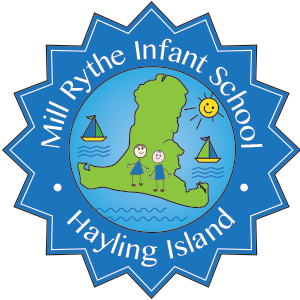Bug Club Phonics – Phonics
WELCOME TO OUR PHONICS HELP PAGE!
This page should have all the answers you are looking for about how to say each sound, which terminology to use and what is taught when. If you have any questions about anything at all, please speak to Mrs Merriman or your child’s class teacher.
WHAT IS PHONICS?
Phonics consists of teaching the skills of segmenting and blending, the alphabetic code and an understanding of how this is used in reading and spelling. Simply put, it is hearing the sounds in a word and writing them down to spell it correctly. When reading, it is sounding out a word and sticking the sounds back together to read the whole word. We use Pearson’s Bug Club Phonics and utilise their phonetically decodable readers to support the children’s Phonics journey. For more information regarding Bug Club please watch this video created by Pearson Bug Club: https://www.youtube.com/watch?v=0dCRWLLNXPo
ISN’T THERE A TEST?
Yes, there is a National Phonics Screening in Year 1 where the children have to read 20 real words and 20 ‘alien’ words. This is conducted in a very child-friendly way by the class teachers. At every parents evening you will be informed of your child’s progress in Phonics and at the end of Year 1 the school report will inform you if they have passed or not. If your child does not pass in Year 1 they will be given additional support throughout Year 2 to enable them to pass the next year. Parent briefings on the Phonics check and Key Stage 1 tests are available through the Spring and Summer terms – please see the calendar/ events page.
WHAT WILL MY CHILD LEARN THIS YEAR?
Phases 1, 2 and 3 are taught within Year R. Phases 4 and 5 are taught in year 1. All phases are then revisited as part of Year 2, alongside phase 6 to develop the children’s spelling understanding.
PHASE 2
s a t p i n m d g o c k e u r h b f l
PHASE 3
j v w x y z qu ch sh th th ng ai ee or igh oa oo oo ar ur er ow oi ear air ure
PHASE 4
In Phase 4 no new phonemes (sounds) are introduced to the children. Instead, they practise combining the graphemes they already know into new, longer combinations. For example, sounding out and spelling words like scrap and stretch. These words use a combination of vowels (a e i o u) and consonants (all other letters) which can be represented like this:
CVC = Consonant Vowel Consonant (sat)
CVCC = Consonant Vowel Consonant Consonant (taps)
CVCCC = Consonant Vowel Consonant Consonant Consonant (lifts)
PHASE 5
ay ou ie ea oy ir ue ue aw wh wh ph ew ew oe au ey a_e e_e i_e o_e u_e
In Phase 5 some of the digraphs (2 letters that make 1 sound e.g. ew, wh) can make different sounds depending on which word they are in (e.g. clue, venue).
Videos coming soon!
I’M NOT SURE ABOUT THE TERMINOLOGY OF PHONICS.
Phoneme
A phoneme is the smallest unit of sound in a word.
Feel/watch how your mouth changes when you say a word, every time your mouth moves/changes shape you are saying a new phoneme, e.g. b-r-i-ck
There are 44 phonemes in the English language
Grapheme
Graphemes represent how a phoneme is spelt. Each grapheme is a unit of sound regardless of how many letters there are.
e.g. The word b-r-igh-t is made up of 4 phonemes; the igh phoneme is represented by 3 letters but only makes one phoneme.
A grapheme can represent more than one phoneme e.g. C = cat and city
Diagraph
Two letters, which makes 1 phoneme. e.g. duck
A consonant diagraph contains two consonants
e.g. sh ck th ll
A vowel diagraph contains at least one vowel
e.g. ai ee ar oy
Split Diagraph
A diagraph in which the two letters are not adjacent e.g. make
a-e is a unit of sound (diagraph)- it is being ‘split’ by the constant k.
Trigraph
Three letters, which make 1 phoneme. e.g. light
Oral blending
Hearing a series of spoken phonemes and merging them together to make a spoken word without corresponding to any graphemes (no text is needed). e.g. teacher says “b-u-s” children say “bus”
Blending (links to reading)
Recognising the letter sounds in a written word and merging them together in the order they are written to pronounce the word. e.g. c-u-p = cup
Segmenting (links to writing)
Identifying the individual phonemes in a spoken word and writing them down to form a word.
IS THERE ANYTHING I CAN DO AT HOME TO HELP?
To ensure your child is regularly applying their Phonics skills at home, please ensure that you complete the daily reading challenge so your child can earn as many badges as possible for regular reading (see letters page). It will also be helpful to practise reading and spelling the key words contained in each week’s learning letter (see year group page).
MY QUESTION HASN’T BEEN ANSWERED – WHAT SHOULD I DO?
Please speak to your child’s class teacher or Mrs Merriman so we can help you and your child feel confident about Phonics.
